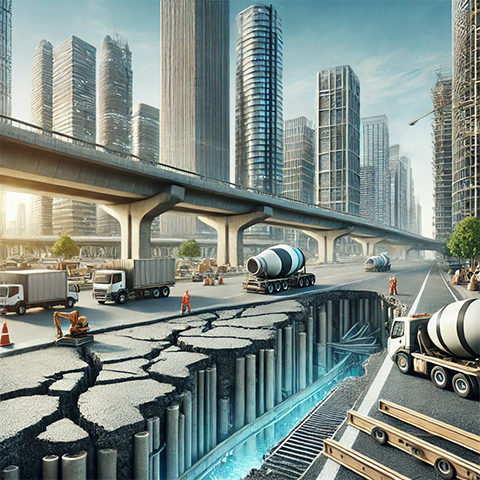What are the applications of self-healing concrete?
Article Source: Frontiers in Materials

Why you should care
Self-healing concrete has the potential to transform construction by allowing buildings, bridges, and roads to heal their cracks automatically, reducing the need for costly repairs. This technology could save billions globally and make infrastructure more sustainable and durable over time.
Answering the question… What are the applications of self-healing concrete?
Self-healing concrete is primarily used in high-stress infrastructure like bridges, tunnels, and buildings. The main purpose is to extend the lifespan of these structures by automatically repairing minor cracks that form due to natural wear and tear, extreme weather, or load stress. This advancement can help reduce environmental impacts while ensuring long-term structural integrity.
How was the study done?
The study tested different self-healing methods, including bacteria that produce limestone, microcapsules containing healing agents, and chemical polymers. Concrete samples were subjected to stress and cracking under controlled conditions. Researchers observed how the concrete responded to water and air exposure, which triggered the healing process. Both lab-based and real-world applications were analyzed to evaluate the healing effectiveness.
What was discovered?
- Crack Healing Capacity: Researchers found that self-healing concrete can repair cracks as wide as 0.8 mm. This is a major improvement over traditional concrete, which requires constant maintenance.
- Extended Lifespan: Infrastructure built with self-healing concrete could last up to 50 years longer than conventional concrete structures due to reduced cracking and repairs.
- Cost Efficiency: Self-healing concrete is estimated to lower lifetime maintenance costs by up to 30% for roads, bridges, and other large structures.
- Environmental Benefits: The use of self-healing concrete can reduce carbon emissions by lowering the demand for new materials and frequent repairs, with studies indicating a 25-40% reduction in construction-related emissions.
- Marine and Harsh Environment Applications: The concrete performed particularly well in marine or highly humid environments, significantly reducing the degradation caused by saltwater and moisture exposure.
Why does it matter?
Self-healing concrete represents a significant leap forward in building materials, offering not only cost savings but also enhancing sustainability in the construction industry. By reducing maintenance and repairs, this technology helps lower carbon footprints and ensures safer, longer-lasting infrastructure.
For more details, read the full article here.
